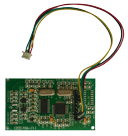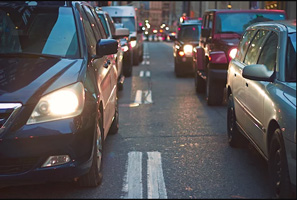Energy harvesting methods have been growing in popularity lately, especially with regards to renewable sources of energy. Renewable sources are not just limited to solar; others include wind, geothermal, and tidal. The only problem with all these forms of energy is that they are either location-dependent or weather-dependent and are not always available.
But what about the human activity as a source of energy? Could energy be harvested from our day to day activities to help power our modern society?
There's a particular form of human activity that California has in spades: traffic. California has decided to run an experiment to see if energy can be harvested from vehicle vibrations on the road.
The Piezoelectric Idea
California has funded an experiment whereby roads that experience heavy traffic will be fitted with piezoelectric transducers to convert the vibration generated by vehicles (both stationary and in motion) into electricity. This electricity can then be fed into the grid to provide power for everything, including buildings, homes, and street lights.
Piezoelectric energy harvesting is not a “new” technology. It's actually been around for some time. In fact, energy harvesting from foot traffic has not only been proven but is in use in some places. For example, several train stations in Tokyo use piezoelectric energy to generate the power needed to run the ticket machines and electronic displays. Another example is a Dutch nightclub which uses piezoelectric tiles on the floor to power lights.
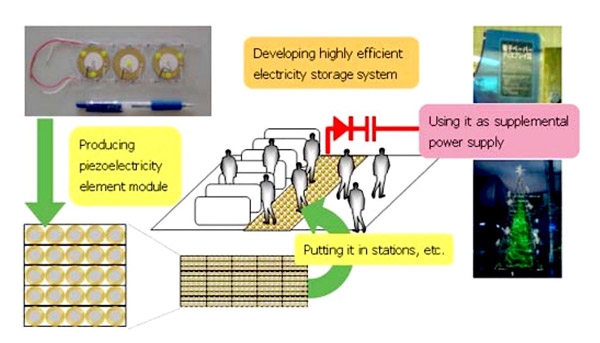
However, will such a system work in traffic conditions, and will enough electricity be generated to compensate for the cost?
Cost For Piezoelectric Devices and Energy Output
Piezoelectric devices are more commonly used to generate sounds and measure vibrations instead of generating electricity for energy consumption. This makes finding energy data for piezoelectric energy harvesting rather difficult. Luckily, there is a transducer for sale that is specifically designed for generating electricity in energy harvesters. Here are some of the specs given:
- Open circuit voltage at rated deflection = 20.9V
- Closed circuit current at rated deflection = 57 microamps
- Power output at rated deflection = 7.1mW
- Operating temperature = -20°C to 90°C
- Dimension = 70mm x 31.8mm (height 1.5mm)
- 1 piece = $301 : 100 pieces = $132
Given this data, we can roughly project that the amount of energy generated by piezo devices (50Hz vibration) is 3.189 W / square meter.
A single transducer (if purchased in bulk) would be $132 per device, which gives a total cost of $60,000 per square meter (450 devices in a square meter). While this may seem like an unusually hefty sum of money, this is for a square meter of material that can stretch a long way if made narrow. In California, the idea is to create a 60 meter stretch of road and use 2 cm wide piezoelectric generators in stacks. However, this suggests that the piezo devices used in the project will be of a more common type found in everyday electronics as opposed to devices specifically designed for energy harvesting (such as the one produced by Piezo Systems Inc).
Ler's look at an example where the pavement that is to be fitted with energy harvesters will be a complete strip of piezo material. Taking a pavement width of 1.5 meters, the total area of such a strip would be 90 meters square, which results in a piezo cost of $5,400,000 and a total energy generation (assuming that all paving is occupied by people jumping at 50Hz) of 287.01W. It's more likely. However, piezo devices would be scattered so. If we change the example to require a 10% coverage of piezo devices, the cost would be $540,000 with an overall energy output of 28.7W.
Considering that a single 1KW solar panel can cost as little as $1000, the price for harvesting electricity from walking seems extreme.
Read More
- An Introduction to Harvesting Solar Energy from Space
- Solar Roads: Emerging Tech or Looming Disaster?
- The How and Why of Energy Harvesting for Low-Power Applications
A Place for Cars?
There are issues beyond such a system; there is the practical side to consider, too.
Piezo generators work well in night clubs and train stations because people are unlikely to destroy their pathways. Since piezo devices rely on a deflection to generate electricity, the footpath needs to allow for movement and vibration to maximize the energy harvesting devices' efficiency. This is not a problem for pedestrian areas as people are not very destructive, but roads that handle vehicle traffic are different.
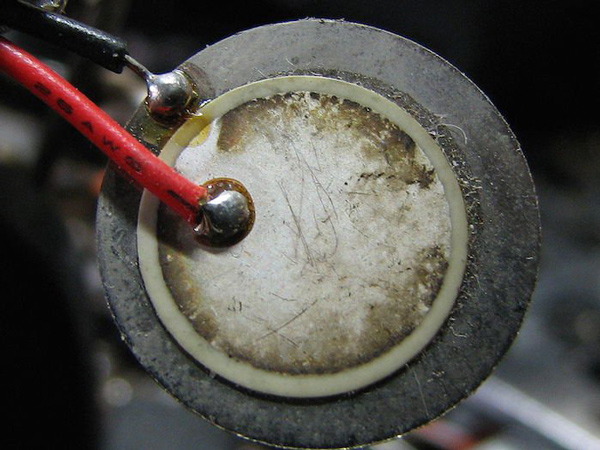
Roads must be built to resist damage from tires and debris if they are safe and reliable. As a result, roads tend not to move around and deform under the impact (instead, they break into pieces). This makes placing transducers under roads problematic on two fronts. The road is either built to allow vibrational energy to reach the transducers, which potentially makes the road weaker, or the transducers do not reach anywhere near their potential, making them a costly investment.
Also, the world is shifting from internal combustion engines to electric batteries. Combustion engines tend to vibrate a lot, even when stationary. This is what the Californian system would rely on during heavy traffic. However, electric cars do not vibrate nearly as much when stationary, thus rendering the energy harvesters less effective.
This raises whether this piezo road idea will age well as more and more consumers turn to electric cars. As a matter of fact, California has arguably been the global leader in the electric vehicle movement, giving China a run for its money in electric car sales. This isn't to say that electric vehicles would render traffic energy harvesting moot, but it's a factor that should be considered when investing millions of state dollars into infrastructure.
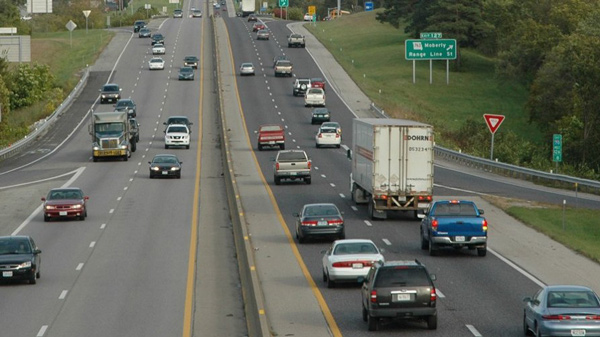
Summary
Perhaps the researchers working on this proposal will use a new type of device that can generate more electricity, or maybe the stacks will be much larger. It isn't easy to project how effective this system will be without knowing more details. However, it isn't easy to imagine how such a system could be successful enough to warrant expansion.
California’s Piezoelectric Energy Harvesting Aims to Turn Traffic into Green Energy


































































